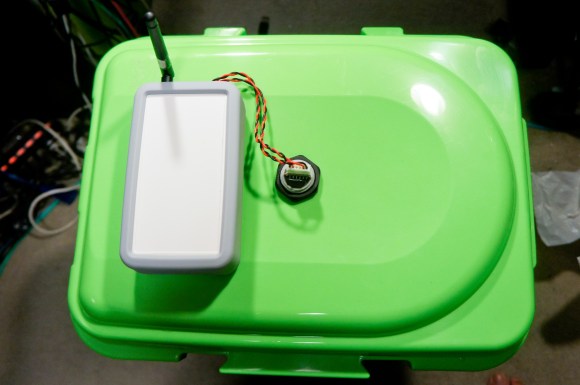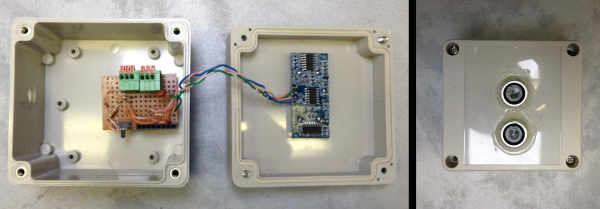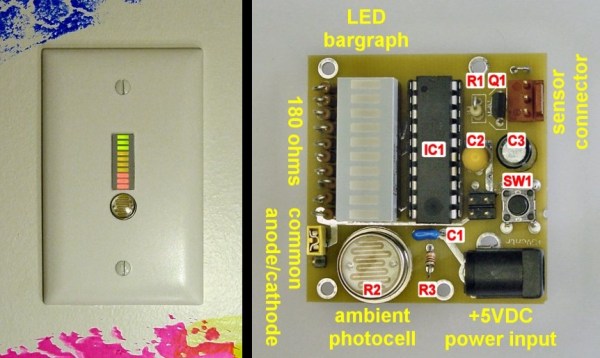level monitoring3 Articles
Water Softener Level Detector Keeps You Out Of Trouble With Wife
Some households have water supplies that contain higher than desired levels of minerals. This condition is called hard water. There is nothing harmful about hard water but it does leave mineral deposits on pipes and appliances and makes cleaning a little bit more difficult. The solution is to have a water softener system which is basically a tank filled with salt that the household water passes through. This tank has to be refilled about every month and [David] was catching a little flak from his wife because he kept forgetting to fill it. He then set out to do what any great husband would do and built a Water Softener Monitor that reports the quantity of salt in the basement tank up to the living quarters.
[David] started thinking that he should test the salinity of the water to determine if salt needed to be added but after thinking about it for a while decided against it because any metal in that salty water would surely corrode. A non-contact approach would be to use an IR distance sensor mounted to the top of the tank and measure the distance to the pile of salt that slowly lowers as it dissolves into the water. In this case, he used a Sharp GP2D12 that can measure accurately from 10 to 80cm.
Continue reading “Water Softener Level Detector Keeps You Out Of Trouble With Wife”
A Think-tank Solution For Monitoring Radioactive Water Storge Tanks

When we hear reports of radioactive water leaking into the ocean from the [Fukushima Dai-Ichi] plant in Japan we literally have to keep ourselves from grinding our teeth. Surly the world contains enough brain power to overcome these hazards. Instead of letting it gnaw at him, [Akiba] is directing his skills at one solution that could help with the issue. There are a number of storage tanks on site which hold radioactive water and are prone to leaking. After hearing that they are checked manually each day, with no automated level monitoring, he got to work. Above is the wireless non-contact tank level sensor rig he built to test out his idea.
A couple of things made this a quick project for him. First off, he just happened to have a MaxSonar MB7389 waterproof sonar sensor on hand. Think of this as a really fancy PING sensor that is water tight and can measure distance up to five meters. [Akiba’s] assumption is that the tanks have a hatch at the top into which this sensor would be positioned. The box next to it contains a Freakduino of his own design which includes hardware for wireless communications at 900 MHz. This is the same hardware he used for that wireless toilet monitor.
We really like seeing hacker solutions to environmental problems. A prime example is some of the cleanup hacks we saw around the time of the BP Gulf of Mexico oil spill.













